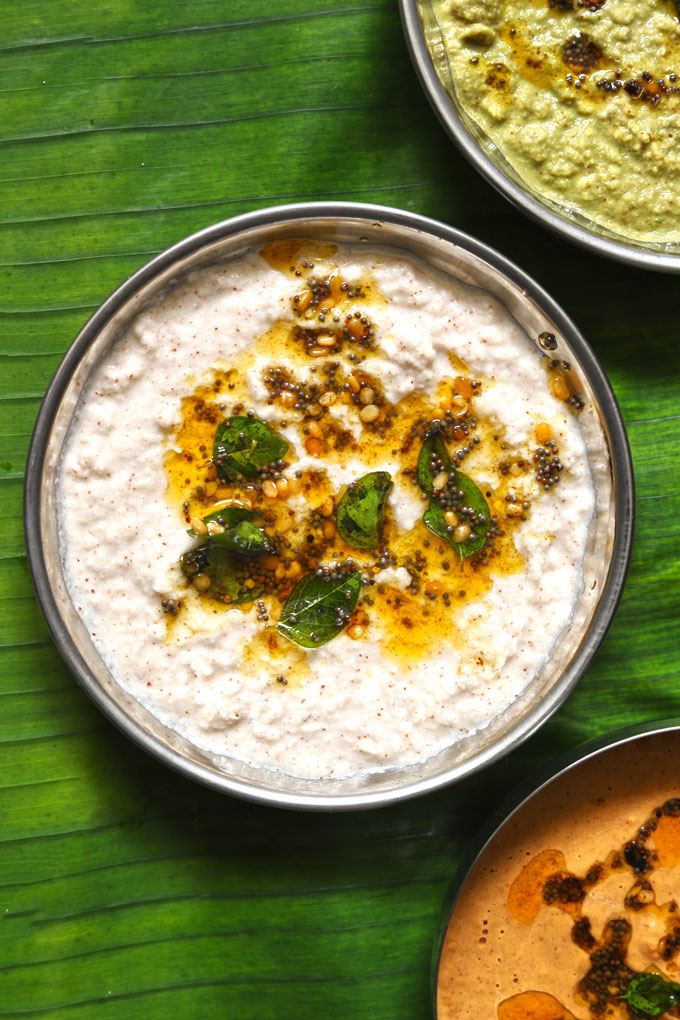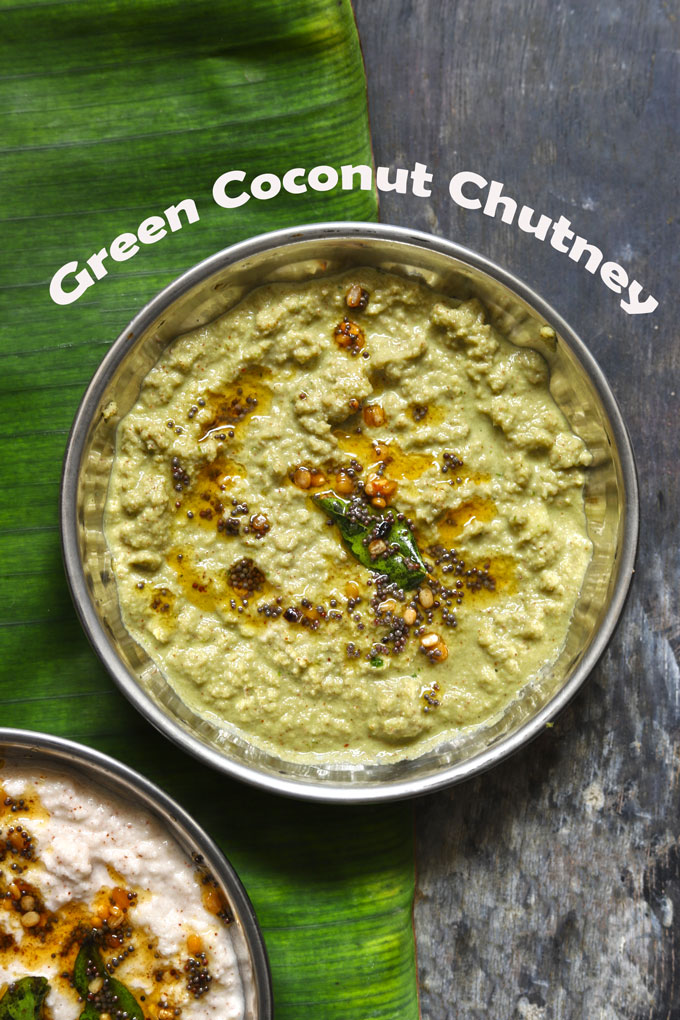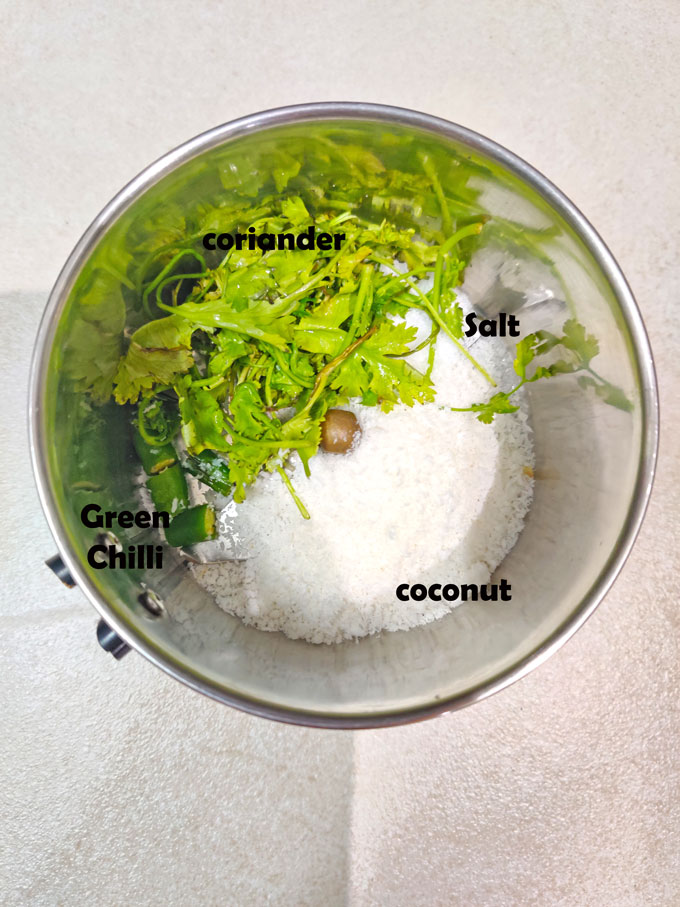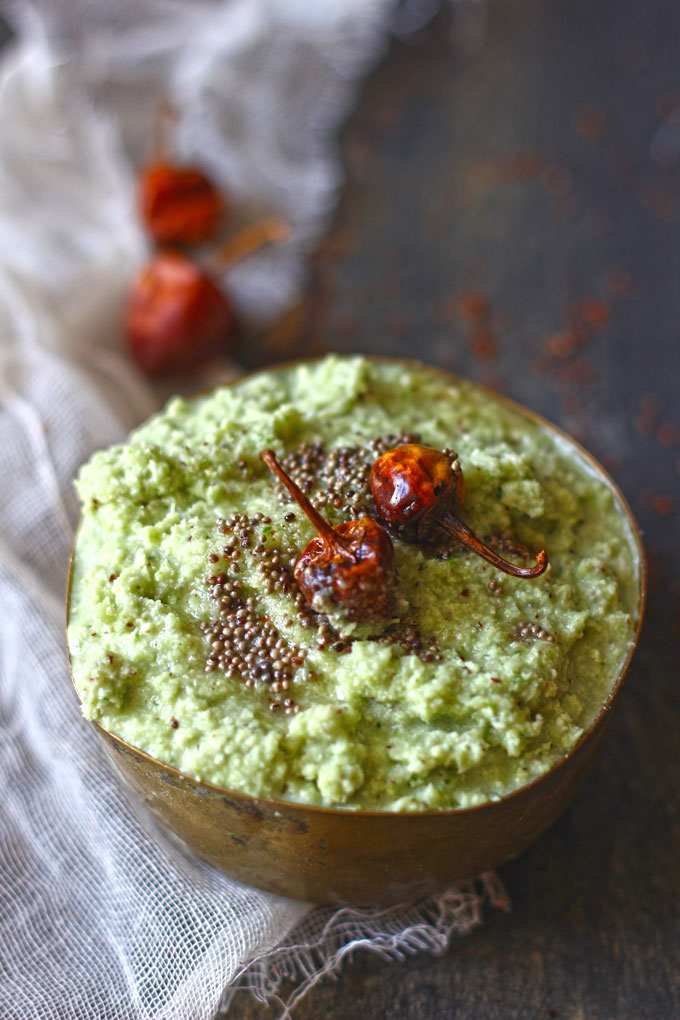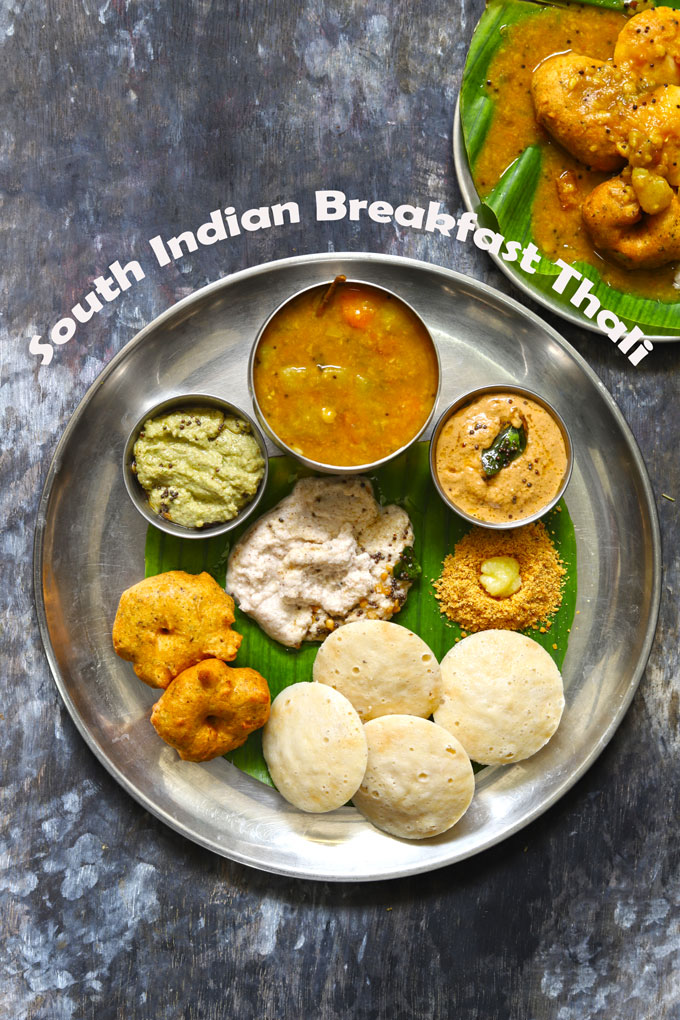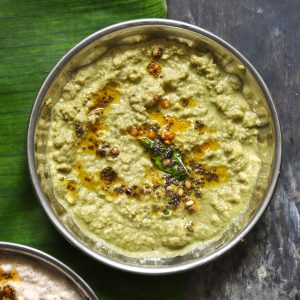In South Indian Cuisine, the coconut is abundantly used. The reason is the tall, handsome coconut trees standing by the sea coast with utmost pride. From curries, chutney to poriyal, and desserts, the coconut is omnipresent in the local South Indian and Coastal dishes. Coconut Chutney is one of the most popular South Indian side dishes. It tastes fabulous with the deep-fried snacks and the South Indian breakfast such as idli, vada, dosa, etc.
My Green Coconut Chutney
I love the splash of green colour and freshness in my chutney. Hence, I add fresh coriander leaves along with coconut, salt, green chilli, and water while blending. The addition of fresh coriander leaves and green chilli makes this chutney unique. Unlike North Indian-style coriander chutney, this green chutney is tempered. The fresh coriander leaves give the chutney a bright green colour, making it taste refreshing and rich in anti-oxidant.
Coconut Chutney Recipe Variations
There are many variations of nariyal chutney followed across South India.
Traditional Chutney: Blend coconut, green chilli, salt, and water to a smooth paste. Later, temper with whole red chillies, mustard seeds, urad dal, and curry leaves fried in ghee. This is the simplest and the easiest South Indian chutney recipe. Red Chutney: Fry onion and tomato in ghee. Blend with the remaining ingredients for the chutney. Peanut Chutney: Replace half the coconut with skinned, roasted peanuts for a nutty taste. Garlic Chutney: Add garlic cloves according to taste preference while blending the ingredients to give the chutney a garlicky flavour.
The Tadka (Tempering)
The tadka of a South Indian chutney is mainly – ghee, black mustard seeds (rai), white urad dal, curry leaves, and dry red chillies. The simple but aromatic tempering complements the mild flavour of the chutney and adds a crunchy layer on top. To make a vegan chutney, you can use coconut, groundnut, or any other vegan oil to fry the tempering ingredients.
How do you store coconut chutney?
Transfer the chutney to a container with a tight-fitting lid and store it in the refrigerator. It remains fresh for 4 – 5 days easily. For freezing the chutney, use a freezer-friendly container or zip lock bag for storing it. You can freeze it for 1 – 2 months. Avoid leaving chutney at room temperature for too long, especially during summer.
Can I use frozen or packaged desiccated coconut?
You can use frozen or packaged desiccated coconut for making the chutney. Defrost the frozen coconut as per packet instructions before making the chutney.
Serving Suggestion
I LOVE coconut chutney with everything and anything. But a few of my favourite combinations are:
Rava Idli Medu Vada Moong Dal Chilla Mix Veg Uttapam Rava Paniyaram Masala Khara Bath
Subscribe to our weekly newsletter or follow us on Youtube for video recipes.
